What Are Driver Assistance Features? Driver Assistance Systems Explained
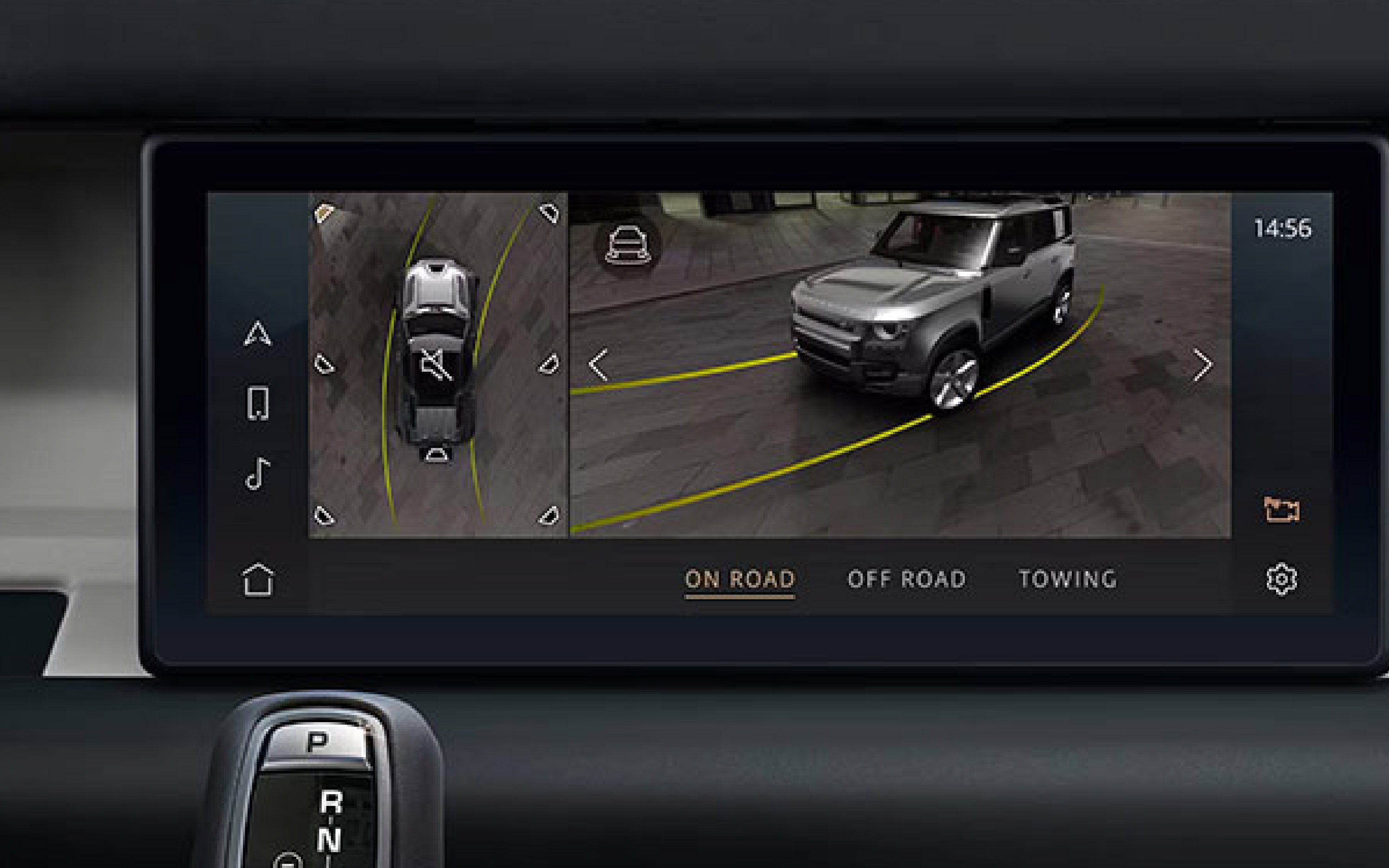
Most modern cars today will feature a whole host of Advanced Driver Assistance Systems (ADAS). But what are these systems and how do they benefit you as a driver? Read on for all you need to know.
- Advanced Driver Assistance Systems (ADAS) are technical features which aim to improve a vehicle’s safety.
- In the UK, almost 25% of insurance claims are related to collisions during parking or at low speeds, according to Thatcham Research.
- To mitigate this, many driver assistance features exist specifically for these purposes. For example, parking aids and pedestrian detection alerts.
- When shopping for a new car, you should ask about how the different driver assistance systems work in the vehicle/s you are interested in.
Table of Contents
1. What are driver assistance features?
2. How do different driver assistance systems work?
3. The benefits of Advanced Driver Assistance Systems (ADAS)
4. ADAS and autonomous driving
5.Best safety features to look for when buying a new car
5.FAQs about driver assistance systems
Disclaimer: Driver assistance features are merely intended to support the driver. As the driver, you are still responsible and liable for ensuring your own safety, and should not rely on these systems to do so.
Many moons ago, safe driving relied on motorists having eyes in the back of their heads. Though over the last decade or so, car manufacturers have been fitting vehicles with a number of advanced safety systems.
These are referred to as driver assistance features or Advanced Driver Assistance Systems (ADAS). This technology actively works to monitor and detect potential hazards to keep you and others safe and reduce accidents.
But what are the different driver assistance features available, and how do they work? In this article, we go through some of the most popular features and how they support your safety.
What are driver assistance features?
Driver assistance features do exactly what their name suggests. They assist the driver through several different technologies to help maximise safety on the road.
You’ll find they are usually part of either a standard or optional package, and they work both together and individually to help you drive safe.
They are also designed to make driving easier, taking the stress out of fussy parking manoeuvres which nobody really enjoys!
Some of the most popular driver assistance features you might see listed in a vehicle’s specification include:
- Adaptive Cruise Control (ACC)
- Blind Spot Monitoring
- Forward Collision Assist(FCA)
- Lane Keeping Assistance
- Lane Departure Warning
- Traffic Sign Recognition
- Driver Alertness Detection
- Parking Assist
Depending on the manufacturer, these might be named slightly differently. They also work in different ways to support a specific function, which we’ll come onto next.
How do different driver assistance systems work?
Driver assistance systems use a range of cameras, ultrasonic sensors, radars, and lidar (laser radar). The exact mix of which will depend on where they are located in the vehicle and their purposes.
Many features are located in the front of the vehicle since cars travel in this direction most often. Depending on the system, these features also have the ability to partially control the vehicle in situations where this is needed. For example, through applying brake pressure, restricting speed, or correcting your steering.
Here are how some of the most common driver assistance features work and their purposes:
Adaptive Cruise Control (ACC)
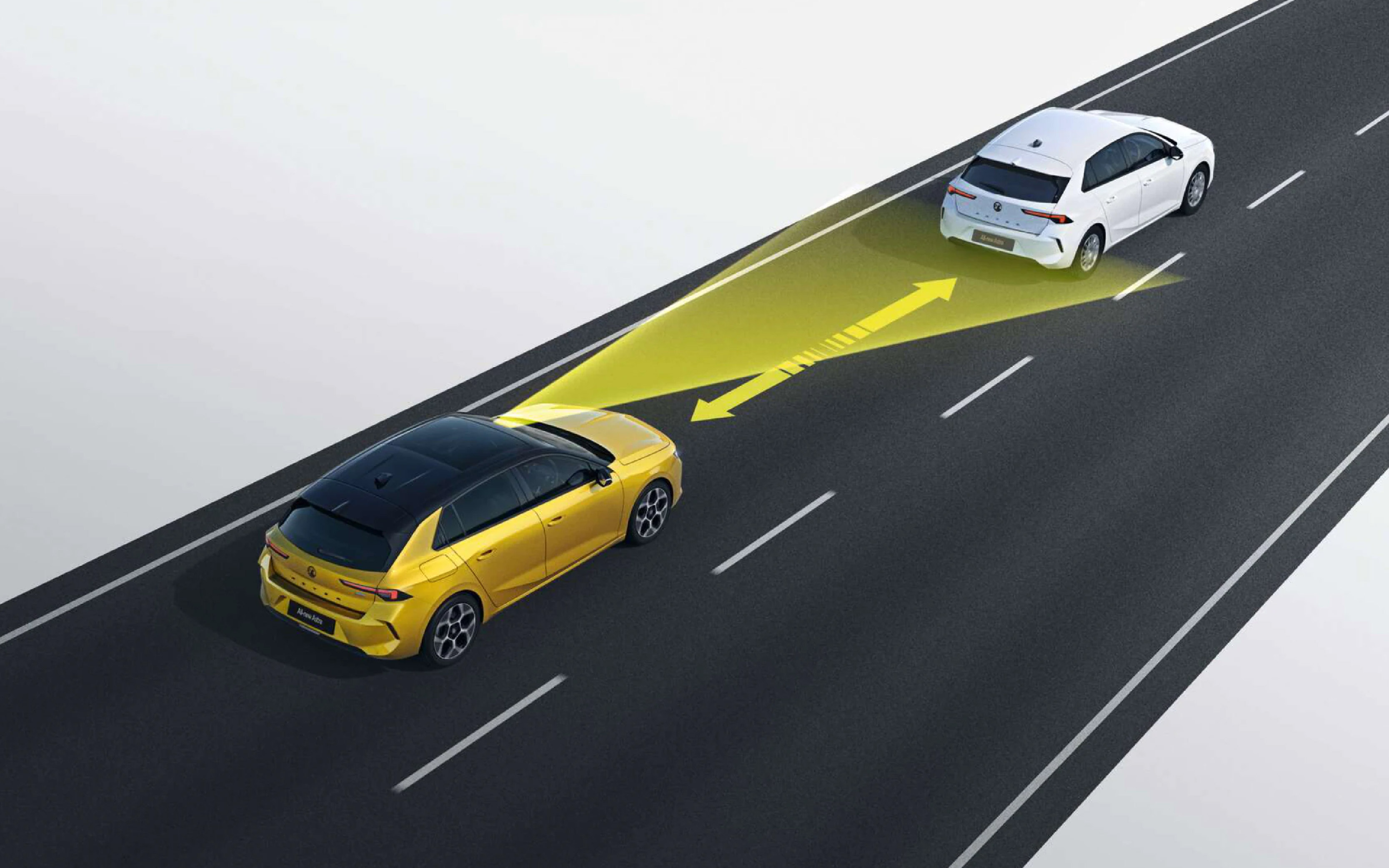
ACC will read the car in front of you, adjusting your speed accordingly to help maintain a safe distance. There is usually a radar built into the front bumper to facilitate this, though you can also adjust the speed yourself.
Blind Spot Monitoring
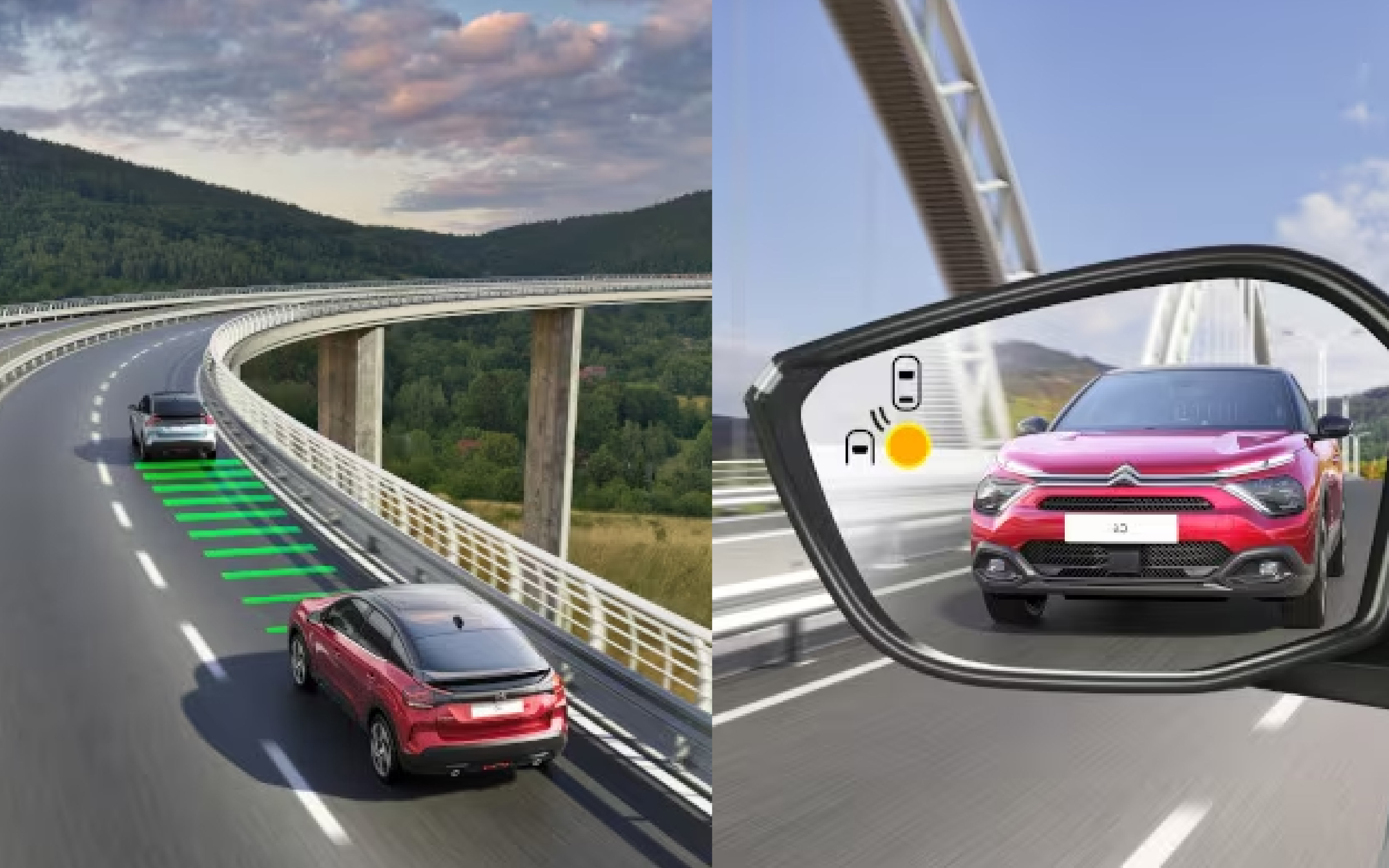
This uses sensors normally located in the wing mirrors to detect vehicles in your blind spot (the area not covered by your mirrors). The system engages whenever a movement you are about to make could impact another vehicle. This could be things like pulling out of a parking space on a busy high street or changing lanes on the motorway.
Forward Collision Assist (FCA)
FCA works by actively monitoring the vehicle in front, alerting the driver once their positioning becomes too close. If the risk of a collision is detected, the system will provide either visual or audible warnings and apply gentle brake pressure.
Lane Keeping Assistance
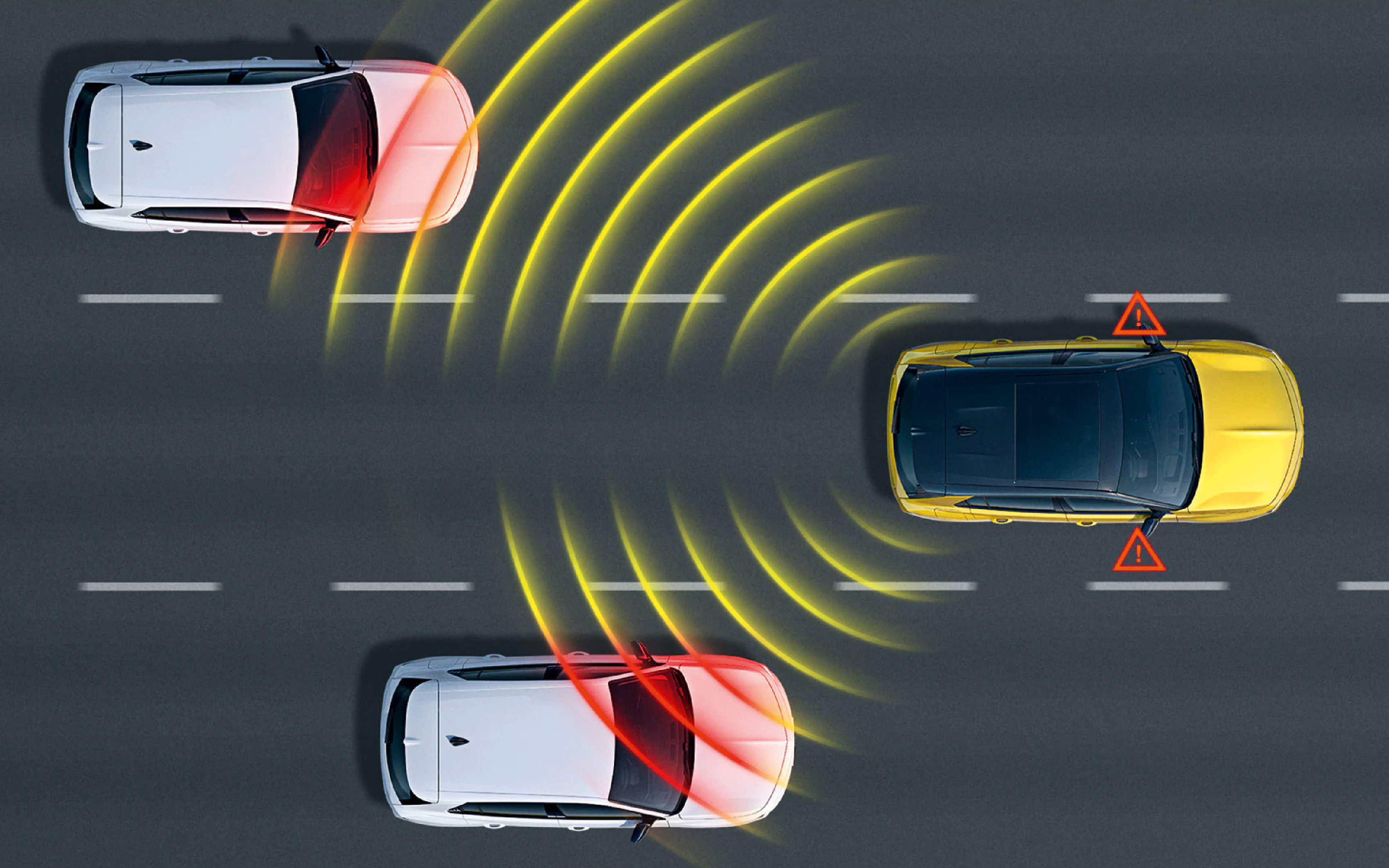
This system actively corrects your positioning to help you stay centred in your lane when drifting is detected. It uses semi-autonomous steering with the Lane Departure Warning System which notifies the driver.
Lane Departure Warning System
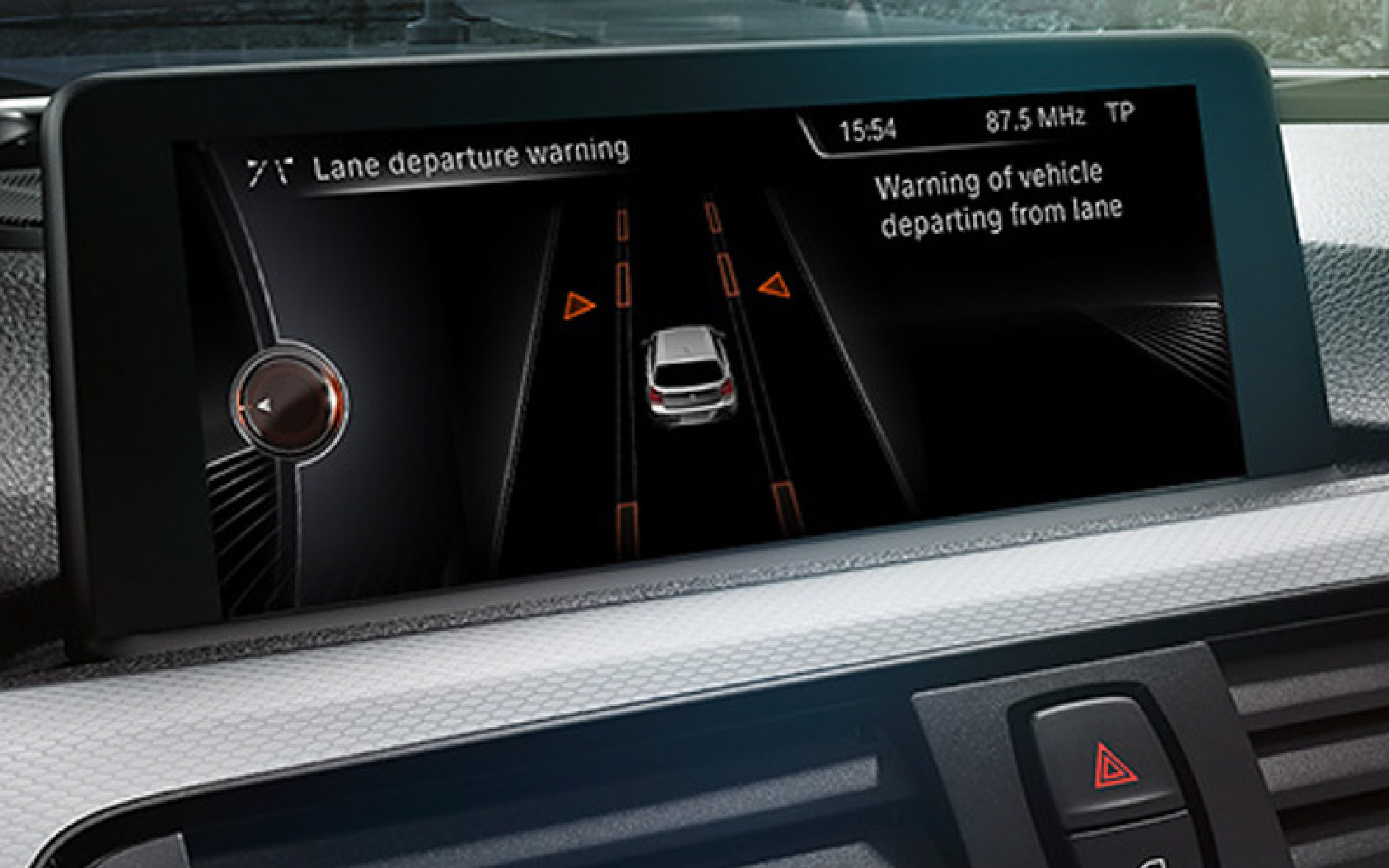
A notification mechanism, Lane Departure Warning is a system alerts the driver if drifting is detected without use of the turn signal. This will usually provide a visual or audible warning before Lane Keeping Assist engages.
Traffic Sign Recognition
A set of cameras will read traffic signs like speed limits or hazard warning signs to alert the driver of their presence.
Driver Alertness Detection
This system monitors steering patterns, vehicle positioning, and even the driver’s eyes in some cases to watch out for drowsiness. If the system identifies the driver is not alert, a visual sign will be displayed followed by an audible sound, encouraging them to take a break.
Parking Assist
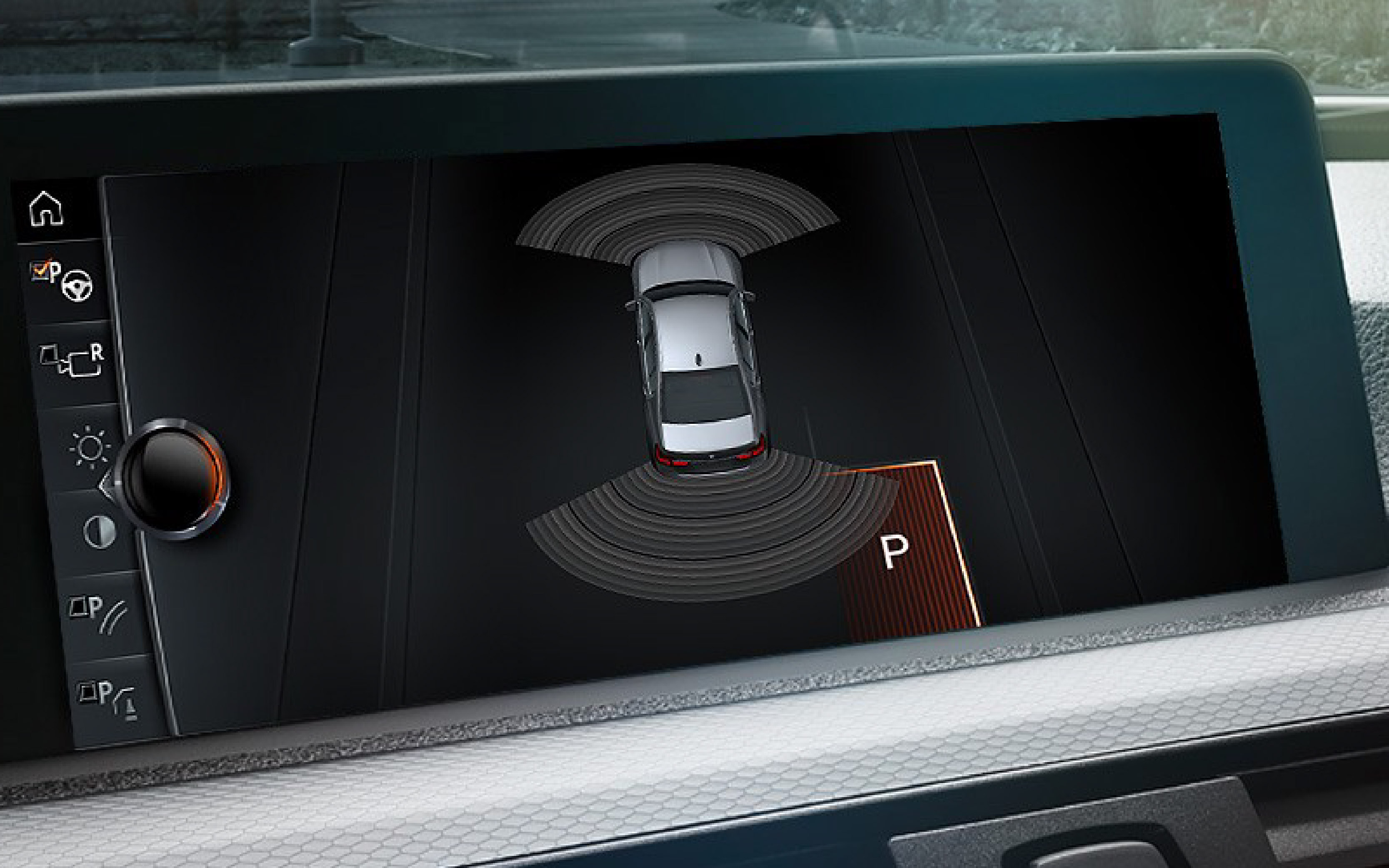
These ADAS use ultrasonic sensors in the front and rear bumpers to alert the driver of any objects or hazards they might have missed when parking.
Other features offer to make parking easier by allowing the system to take over the brakes and steering when parking in a tight space.
These are just some of the driver assistance features you’ll find in most vehicles, and they are usually housed in some form of safety pack. There’s Honda SENSING, Toyota Safety Sense, and BMW Driving Assistant Plus, to name just a few.
The benefits of Advanced Driver Assistance Systems (ADAS)
No matter how skilled or experienced the driver, there is always room for human error which ADAS helps to mitigate.
NimbleFins looked at the top 10 causes of car accidents in Great Britain in 2022. Key findings showed that the number one cause of accidents was motorists failing to look properly (37.8%) . This was followed by:
- Failing to judge another person’s speed correctly (19.7%)
- Reckless or careless driving (18%)
- Poor turning or manoeuvring (11.6%)
- Loss of control (11.4%)
Driver assistance technologies are here to combat this. A second pair of eyes, they go a long way towards keeping you and other road users safe, lowering the risk of human error, and preventing accidents.
Thatcham Research reports that cars with Electronic Stability Control (ESC) are 25% less likely to get into an accident.
The system has been so effective that it has been a mandatory requirement on all new cars since 2014. It works by applying minor steering and braking actions to specific wheels if veering is detected.
Other benefits for drivers include:
- Increased focus on the road ahead thanks to cameras and sensors around the vehicle
- Added convenience when performing tricky parking manoeuvres
- Greater driving confidence with comprehensive safety systems to inform decisions
- Peace of mind when driving around busier town centres or car parks
- Increased awareness of potential hazards and objects on the road
ADAS and autonomous driving
With the growth of driver assistance systems also comes progress towards autonomous driving. Also referred to as self-driving, autonomous driving is where a vehicle is able to operate itself without the need for human control. There are different levels of autonomous driving, which go from level 0 (no automation) to level 5 (fully automated).
Advanced Driver Assistance Systems (ADAS) fall into level 2, which is partial automation. Certain functions allow the system to take over temporarily, through acts like automated steering. The driver, however, still monitors these actions and can take control at any time.
When it comes to the future of autonomous driving, there will be a lot of rigorous testing under a range of circumstances to be completed. Self-driving cars will need to be able to analyse all activity – from pedestrians right through to weather conditions.
ADAS is a step towards this future, as vehicles prepare to achieve more advanced automation. This could happen from as early as level 3, according to technology company Synopsys.
Best safety features to look for when buying a new car
When it comes to the best safety features to look for when buying a new car, these will largely depend on your preferences.
Adaptive Cruise Control can be particularly handy when cruising the motorway, as you can drive to a set speed to make sure you stay within the limit. This will be automatically adjusted by the system where necessary based on your distance from the car in front.
Blind Spot Monitoring is also useful when driving at high speeds on the motorway to help you change lanes safely.
Lane Keeping Assist encourages good driving habits like using indicators before changing lanes. Something that many drivers often forget!
If you struggle with parking or want to make it easier, you may benefit from Parking Assistance. This brings you greater convenience and peace of mind with features like a 360-degree camera, Rear Cross Alert, and more.
These will help to give you an enhanced all-around view of your vehicle at all times, to make sure you can easily spot objects and hazards around you.
To get a good sense of which driver assistance features available in the vehicles you are interested in, we recommend booking a test drive. This will allow you to experience these features first hand and how you might use them on the road.
FAQs about driver assistance features
What are examples of driver assistance systems?
Some common driver assistance systems include:
- Adaptive Cruise Control (ACC)
- Lane Keeping Assist
- Lane Departure Warning
- Hill Start Assist
- Front Assist
- Automatic Emergency Braking (AEB)
- Parking Assist
- Rear Cross Traffic Alert
- Traffic Sign Recognition
- Blind Spot Monitoring
- Head-up Display
- Surround View Monitor
- Rear View Camera
This list is by no means exhaustive. You may find different features available depending on the vehicle and specification you are looking at.
What are the two main types of advanced driver assistance systems (ADAS)?
Generally, there are two types of driver assistance systems: active, and passive. Active ADAS is where the car takes active measures to help ensure the driver’s safety. An example of this is Automatic Emergency Braking (AEB) where the brakes are applied automatically.
Passive ADAS simply notifies the driver through alerts like flashing lights, sounds, or vibrations. These inform the driver of a potential hazard or risk of collision to help them respond accordingly.
Which cars have advanced driver assistance systems?
Most modern cars today will have some form of ADAS fitted, though this varies depending on the manufacturer. These will usually be detailed in the car or van’s specification.
If you have any questions about driver assistance systems, get in touch with our expert team who can help you find the information you need.
Can driver assistance systems be added to a car?
Most new cars made today will feature some form of ADAS, so it’s unlikely that these will need to be added. At Vertu Motors, we offer a wide range of new and used cars and vans equipped with driver assistance features.
When buying a new vehicle, you may receive some ADAS features as standard. Though in many cases, you can add more of these optionally through technology packs, parking packs, and more.
What is hands-free driving assistance?
Hands-free driving assistance refers to a system that is able to operate without requiring the driver’s hands on the steering wheel.
Do you need ADAS?
Yes. To minimise the risk of accidents from human error, ADAS are extremely important. Not only do they monitor your surroundings and take care of blind spots, but they also provide practical solutions where a risk is detected.
What are the six levels of driver assistance technology advancements?
Driver assistance features are part of a roadmap towards autonomous, or ‘self-driving’, vehicles. There are six levels to achieve for this, including:
- Level 0 – No Automation: Any control of the vehicle is completely manually by the driver using their own judgement.
- Level 1 – Driver Assistance: The vehicle features some form of assistance system that is automated. For example, a speed monitoring system.
- Level 2 – Partial Automation: This is where Advanced Driver Assistance Systems (ADAS) fall into. The vehicle is able to perform limited tasks autonomously such as minor steering and braking movements. Though the human driver still remains in control.
- Level 3 – Conditional Automation – The vehicle uses environmental detection to perform driving tasks. Though the driver is still required to monitor and can override actions.
- Level 4 – High Automation – The vehicle is self-driving under specific circumstances. The driver is still able to regain control if they wish.
- Level 5 – Full Automation – The vehicle is fully autonomous and there is zero human intervention required.
What is the difference between ADAS and autonomous vehicles?
ADAS allows the vehicle to perform minor tasks with a basic level of autonomy, such as through automatic braking. Autonomous vehicles are those that can perform most driving tasks independently – i.e. without the driver in control. These can essentially drive themselves.
We hope you found this article useful and know more about driver assistance features. Ready to start searching for your next vehicle? Browse our latest new and used car deals, new and used van deals, or book an appointment at your local dealership.